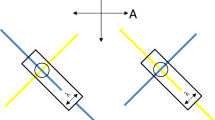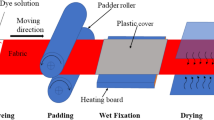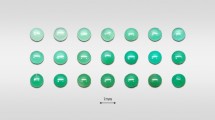Abstract
THE action of solar radiation in reducing the strength of cotton is well known. In our experience, 12-oz. grey cotton duck exposed to weather in a non-industrial atmosphere near Melbourne, Victoria, loses about 25 per cent of its strength in twelve months, due solely to the action of light. Although fungal growth is commonly observed on exposed cotton fabrics, the species isolated have always been non-cellulolytie; fibres from exposed fabrics when examined microscopically by the modified congo red test1 show actinic damage but no fungal damage.
This is a preview of subscription content, access via your institution
Access options
Subscribe to this journal
Receive 51 print issues and online access
$199.00 per year
only $3.90 per issue
Buy this article
- Purchase on Springer Link
- Instant access to full article PDF
Prices may be subject to local taxes which are calculated during checkout
Similar content being viewed by others
References
Young, F. S., and Hindson, W. R., Defence Standards Laboratories, Department of Supply, Australia, Report 176 (1949).
Hindson, W. R., Defence Standards Laboratories, Interim Report (1949).
Schofield, M., Paint Manuf., 17, 386 (1947).
Morley-Smith, C. T., J. Oil Col. Chem. Assoc., 33, 484 (1950).
Author information
Authors and Affiliations
Rights and permissions
About this article
Cite this article
HINDSON, W., KELLY, P. Effect of Some White Pigments on the Actinic Degradation of Cotton. Nature 177, 1241–1242 (1956). https://doi.org/10.1038/1771241b0
Issue Date:
DOI: https://doi.org/10.1038/1771241b0
Comments
By submitting a comment you agree to abide by our Terms and Community Guidelines. If you find something abusive or that does not comply with our terms or guidelines please flag it as inappropriate.



